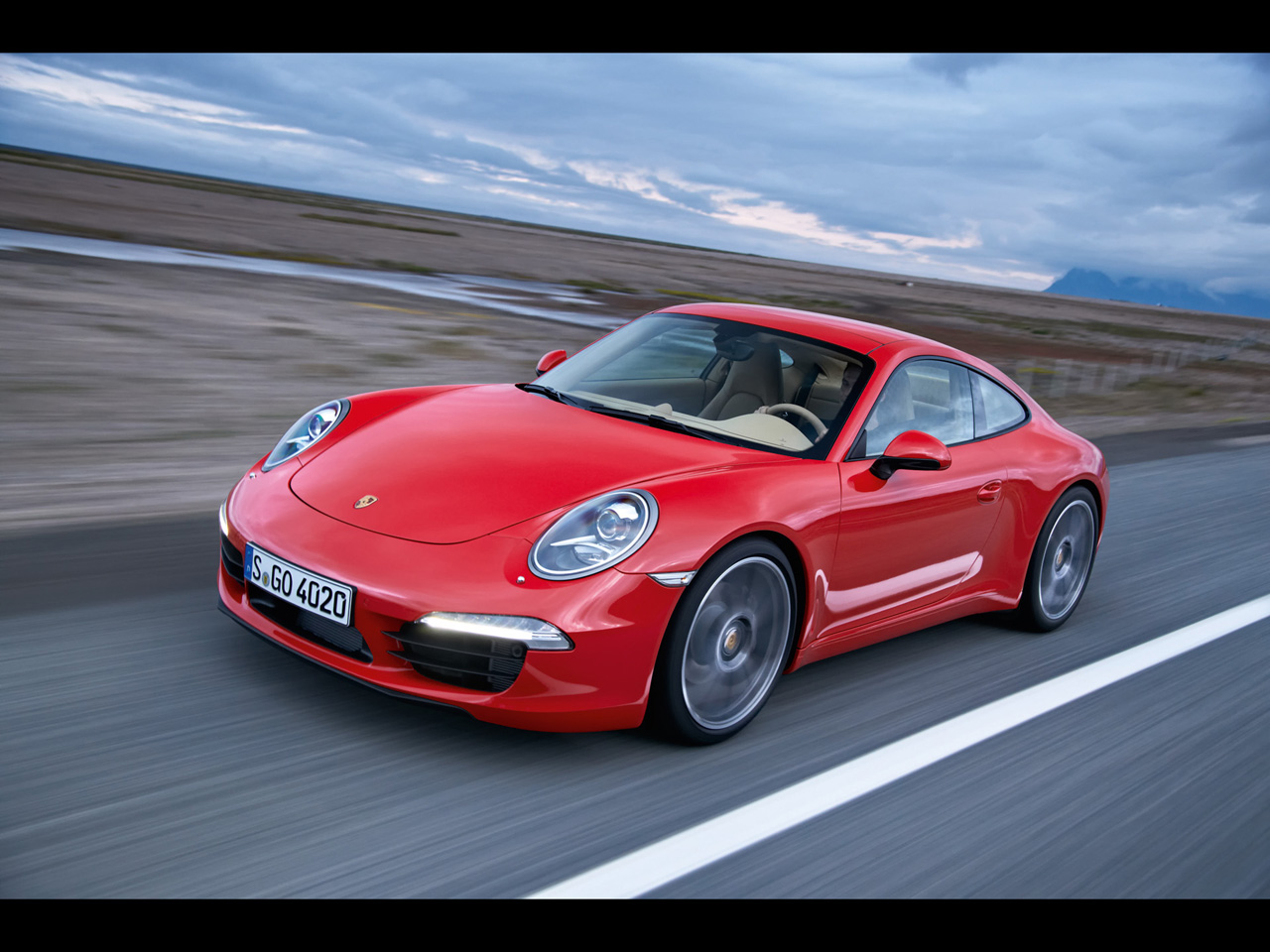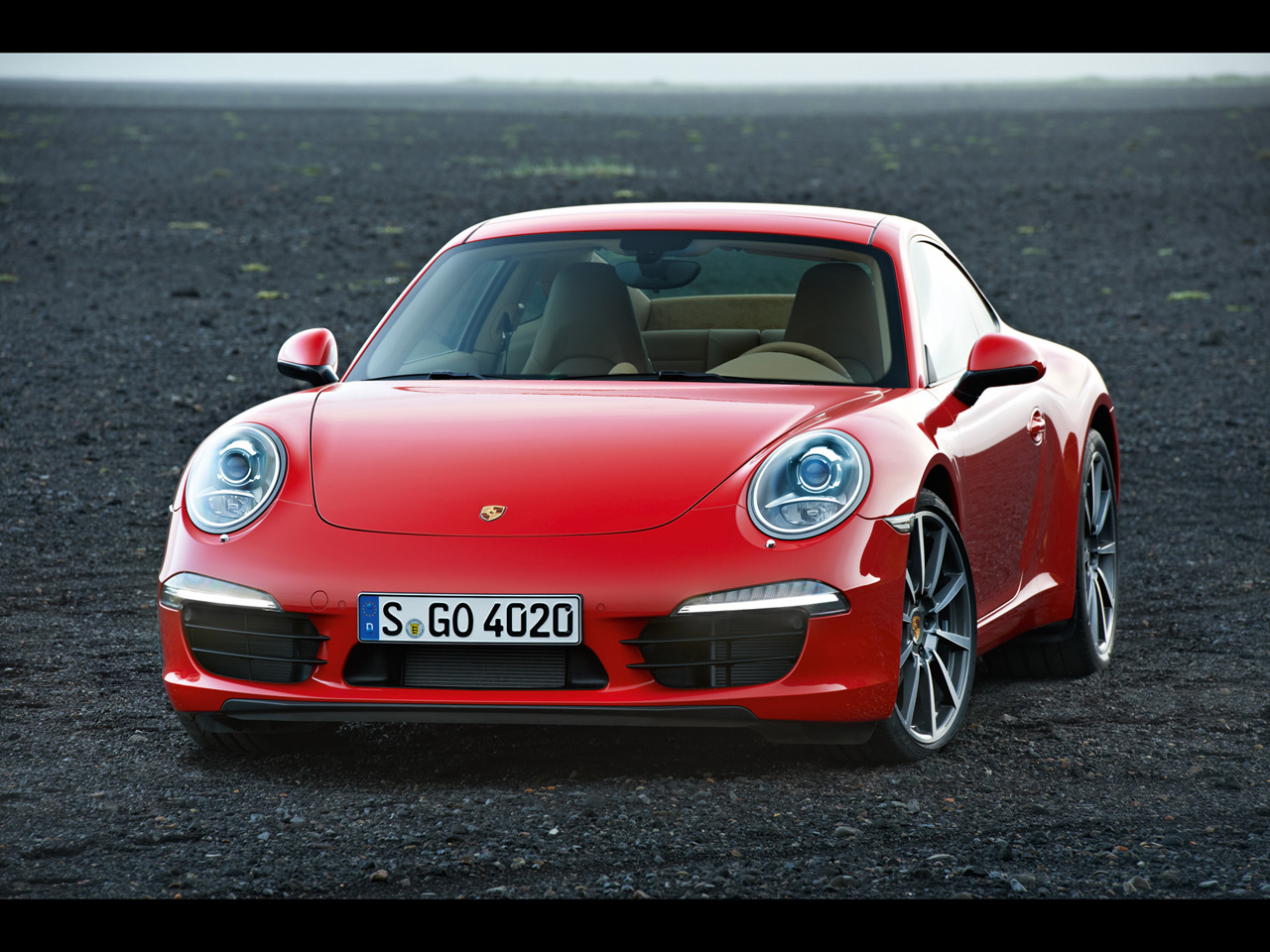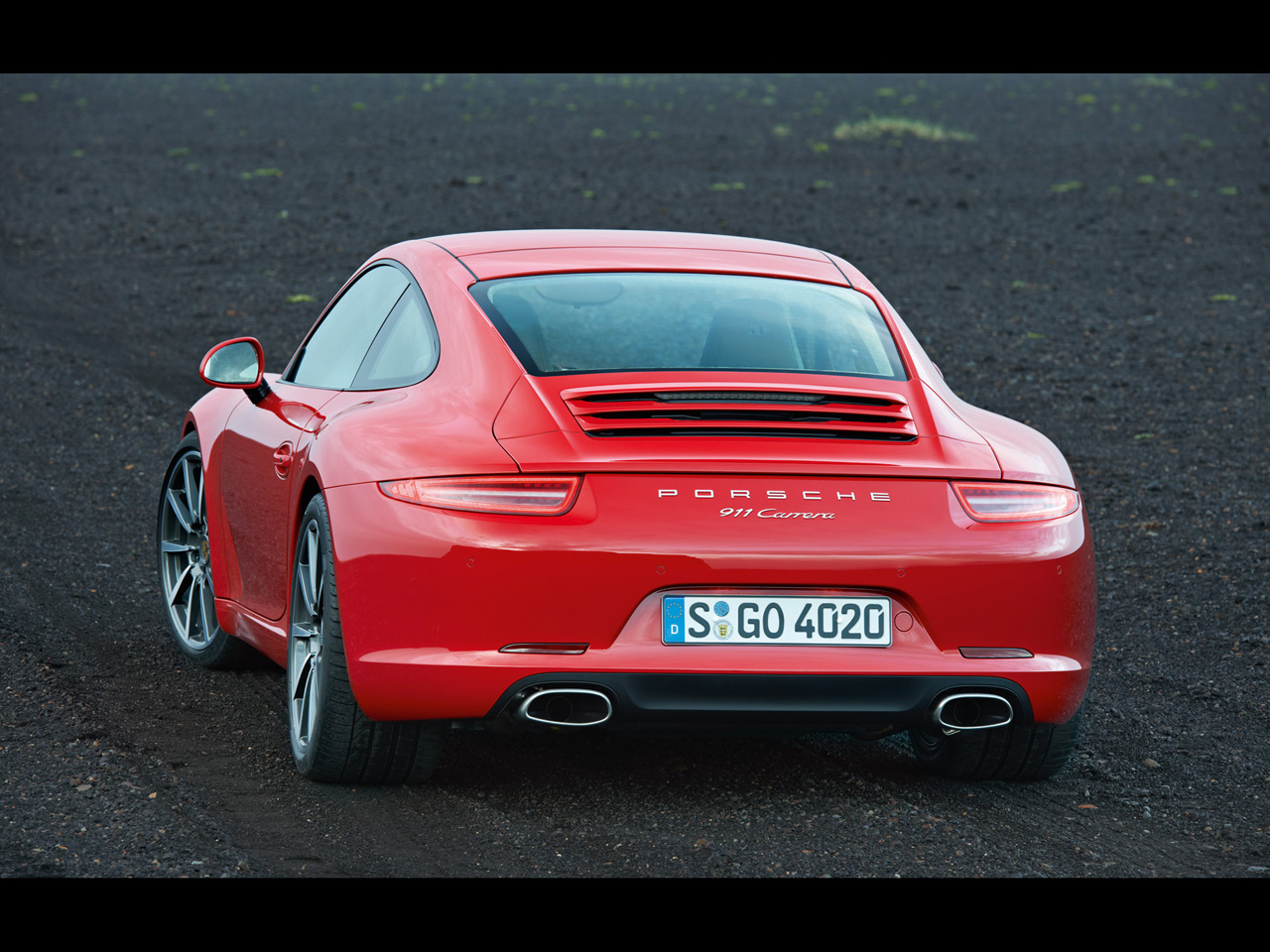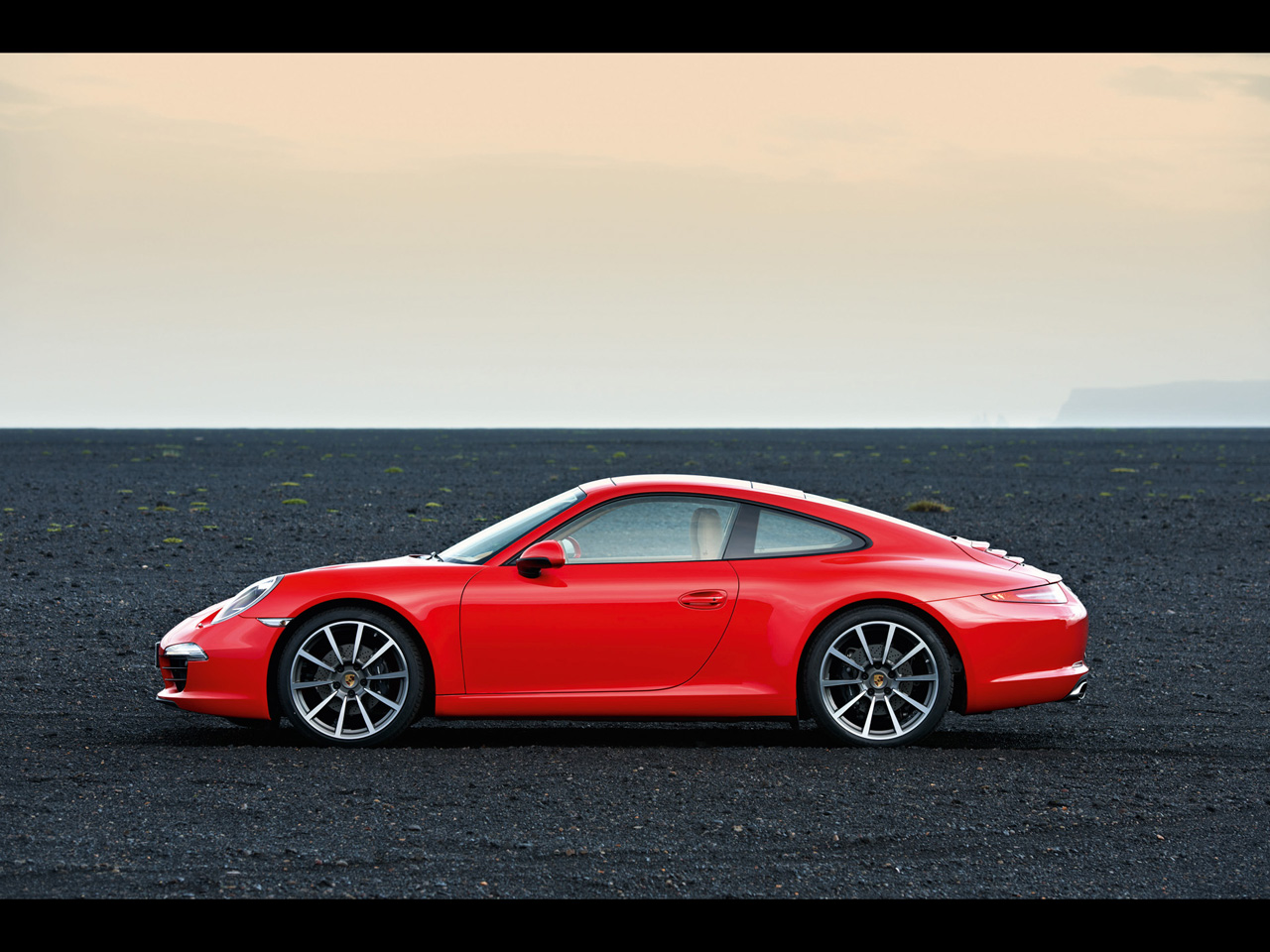2012 Porsche 911 Carrera
|
Price |
$82,100 & $96,400 |
Production |
-- | ||
|
Engine |
3.4 & 3.8 liter boxer-6 |
Weight |
-- | ||
|
Aspiration |
naturally aspirated |
Torque |
-- | ||
|
HP |
350 & 380 hp |
HP/Weight |
-- | ||
|
HP/Liter |
102.9 & 100 hp per liter |
1/4 mile |
-- | ||
|
0-62 mph |
-- |
Top Speed |
-- |
(from Porsche Press
Release) World Premiere at the 2011 Frankfurt Motor Show Next
Month
At 48, the Porsche 911 Carrera is younger than ever. The
completely redesigned seventh-generation sports car icon is stepping
into the limelight with its sleek and stretched silhouette, exciting
contours and precisely designed features. Yet from every angle it is
unmistakably a 911, holding true to the Porsche 911 Carrera
‘evolution, not revolution’ design philosophy.
The 100 mm or 3.9 inch longer wheelbase and reduced overall height
underpin the fresh, athletic yet elegant appearance. When viewed
from the front, the eye is drawn to the 911’s trademark wide-arched
fenders, emphasizing the wider front track. The side mirrors are now
mounted on the upper edge of the door, which also helps highlight
the new design line and gives the visual impression of width.
The new lightweight body is an aluminum-steel composite construction
and contributes greatly to the 45 kg or about 100 lbs weight
reduction when compared to the previous 911 body. When combined with
the greater structural rigidity and optimized aerodynamics –
including a wider, variably extending rear spoiler – the new 911
Carrera’s front and rear lift has been reduced to near zero while
retaining the Cd value of 0.29.
To complement the modern exterior design, Porsche designers created
an interior reminiscent of the Carrera GT. The driver is now even
more closely integrated within the cockpit thanks to the rising
center console and high-mounted shift lever or gear selector located
close to the steering wheel. As with the exterior, classic Porsche
elements abound inside. Present is the instrument cluster with five
round gauges – one of them a high resolution multifunction screen,
and of course the central tachometer and the ignition lock to the
left of the steering wheel.
Setting the standard in its class, as it has for generations, the
new 911 Carrera and 911 Carrera S raise the performance and
efficiency bar yet another notch. All versions get by with
significantly less than 10 liters of fuel per 100 kilometers
(official U.S. EPA fuel mileage estimates are TBD) and fuel
consumption and emissions are up to 16 percent lower in the New
European Driving Cycle (NEDC) when compared with the predecessor.
This is achieved through systems such as the Automatic Start Stop
function, engine and transmission thermal management, electrical
system recuperation, the world’s first seven-speed manual
transmission and – in conjunction with the Porsche
Doppelkupplungsgetriebe (PDK) – the ability to ‘sail’ or coast. The
new electro-mechanical power steering offers not only Porsche’s
typical precision and feedback but also helps increase efficiency
and reduce fuel-consumption.
For example, the 911 Carrera with the new 350 hp, 3.4-liter boxer
engine and optional PDK consumes 8.2 l/100 km based on the NEDC –
1.6 l/100 km less than its predecessor.
The 911 Carrera S with its 400 hp, 3.8-liter boxer engine – 15 hp
more than before – achieves 8.7 l/100 km in the NEDC when paired
with the optional PDK transmission. This represents a fuel
consumption decrease of 14 percent or 1.5 l/100 km.
At the same time there are performance improvements in both models.
The 911 Carrera S with PDK accelerates from 0 to 60 in 4.1 seconds.
Using the Launch Control function of the optional Sport Chrono
Package cuts that to 3.9 seconds. The 911 Carrera with PDK needs
only 4.4 seconds to sprint from a standing start to 60 mph (4.2
seconds when using the optional Sport Chrono Package’s Launch
Control function). Top-track speed for the 911 Carrera S and 911
Carrera is 188 mph and 179 mph, respectively.
The new 911 offers both better longitudinal dynamics and
unprecedented top performance in terms of transverse dynamics. In
addition to the longer wheelbase, the greater agility, precision and
driving stability are based, among other things, on the wider front
track, the new rear axle and new electro-mechanical power steering.
Depending on the model, there are other standard or optional active
control systems available that can help further enhance the overall
driving dynamics. That is especially true for the Porsche Dynamic
Chassis Control (PDCC) active roll stabilization system, available
for the first time on the 911 Carrera S. The system helps reduce
lateral roll when cornering and helps keep the tires in the optimal
position relative to the road surface.
The new 911 further extends the span of seemingly contradictory
attributes such as performance and efficiency, sportiness and every
day practicality that have always typified the Porsche 911. That
makes the 911 Carrera more of a 911 than ever. The new Porsche 911
Carrera celebrates its world premiere at the 2011 IAA Frankfurt
Motor Show in September.
The first new 911 models will arrive in U.S. dealerships beginning
in February of 2012. The new 911 Carrera Coupe will have a base MSRP
of $82,100, while the 911 Carrera S Coupe’s base MSRP will be
$96,400 (excluding destination). Both models will include
substantial additional equipment when compared to the previous
models.
About Porsche Cars North America
Porsche Cars North America, Inc. (PCNA), based in Atlanta, Ga. is the exclusive U.S. importer of Porsche sports cars, the Cayenne SUV and Panamera Gran Turismo. Established in 1984, it is a wholly-owned subsidiary of Porsche AG, which is headquartered in Stuttgart, Germany, and employs approximately 220 people who provide parts, service, marketing and training for 196 dealers. They, in turn, work to provide Porsche customers a best-in-class experience that is in keeping with the brand’s 63-year history and leadership in the advancement of vehicle performance, safety and efficiency. At the core of this success is Porsche’s proud racing heritage that boasts some 30,000 motorsport wins to date.



